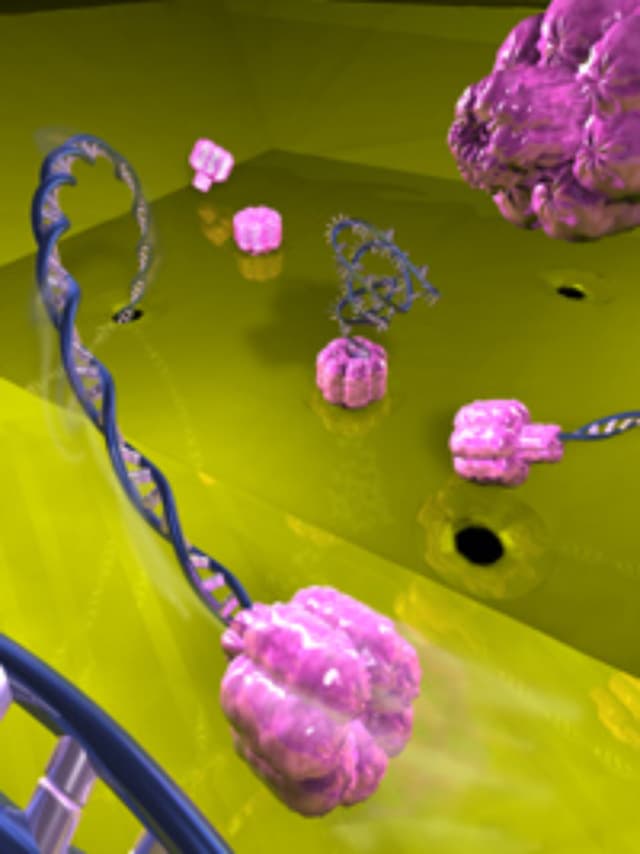Fitting a Biological Nanopore into a Man-Made One, New Ways to Analyze DNA

(Originally published by Delft University of Technology)
November 28, 2010
Researchers at Delft University of Technology and Oxford University have announced a new type of nanopore device that could help in developing fast and cheap genetic analysis. In the journal Nature Nanotechnology (November 28), they report on a novel method that combines man-made and biological materials to result in a tiny hole on a chip, which is able to measure and analyze single DNA molecules.

The first mapping of the human genome - where the content of the human DNA was read off ('sequenced') - was completed in 2003 and it cost an estimated 3 billion US dollars. Imagine if that cost could drop to a level of a few 100 euro, where everyone could have their own personal genome sequenced. That would allow doctors to diagnose diseases and treat them before any symptoms arise," explains Cees Dekker of the Kavli Institute of Nanoscience at Delft.
One promising device is called a nanopore: a minute hole that can be used to 'read' information from a single molecule of DNA as it threads through the hole.
New research by Dekker’s group in collaboration with prof. Hagan Bayley of Oxford University, has now demonstrated a new, much more robust type of nanopore device. It combines biological and artificial building blocks.
"Nanopores are already used for DNA analysis by inserting naturally occurring, pore-forming proteins into a liquid-like membrane made of lipids," explains Dekker. "DNA molecules can be pulled individually through the pore by applying an electrical voltage across it, and analyzed in much the same way that music is read from an old cassette tape as it is threaded through a player. One aspect that makes this biological technology especially difficult, however, is the reliance on the fragile lipid support layer. This new hybrid approach is much more robust and suitable to integrate nanopores into devices."
The new research, performed chiefly by lead author dr. Adam Hall, now demonstrates a simple method to implant the pore-forming proteins into a robust layer in a silicon chip. Essentially, an individual protein is attached to a larger piece of DNA, which is then pulled through a pre-made opening in a silicon nitride membrane (see the attached image).
When the DNA molecule threads through the hole, it pulls the pore-forming protein behind it, eventually lodging it in the opening and creating a strong, chip-based system that is tailor-made for arrays and device applications. The researchers have shown that the hybrid device is fully functional and can be used to detect DNA molecules.